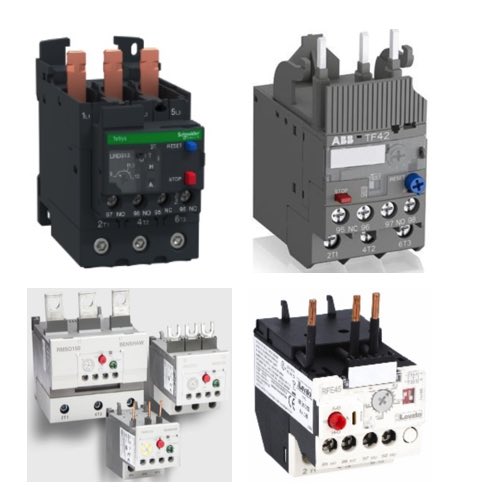All Starter Overload Relays

Overload relays are crucial and indispensable devices that guard motors and protect electrical systems from excessive currents, phase loss, and overheating. They work by accurately and reliably monitoring the current and interrupting its flow when unsafe conditions arise. In commercial and industrial settings, both thermal relays and electronic relays are widely used. Although thermal overload relays are very reliable and provide decent protection, electronic overload relays offer overload protection that's much better, smarter, and safer. They also tend to have phase loss protection, which guarantees that even if one phase is lost, the relay will trip and stop the motor rather than allowing it to run dangerously on the remaining phases.
FAQs
Can solid state relays provide reliable protection for a three-phase electric motor and electrical equipment from excessive current and phase failure?
Yes, solid state relays can provide reliable protection for a three-phase electric motor and electrical equipment by safeguarding against excessive current and phase failure.
Can an overload relay utilizing a bimetallic strip provide motor protection for a motor starter and its electrical components?
Yes, an overload relay utilizing a bimetallic strip can provide motor protection for a motor starter and its electrical components by detecting excessive current and triggering a response to prevent overheating.
Motor Control Basics
Motor control allows operational control of electrical motors in various environments.
Motor control circuits provide a safe way to operate electrical motors. Back when motor control circuits were in their infancy, it would have been common to see a simple disconnect switch that would be used to turn on and off a motor. Depending on the size of the motor and how much voltage was required, operating this disconnect would have been dangerous, with a very high possibility of arcing or electrocution. Not to mention that when the disconnect was actuated, the large amount of inrush current would have damaged the motor over time.
In today's motor control circuits, there are a few common pieces of hardware.
A circuit breaker is used to protect the motor and any hardware downstream. A contactor and an overload relay are connected together and function in tandem to allow for remote and safe operation of the motor. The contactor functions much like a relay, allowing for a smaller electrical circuit to remotely close the motor contacts, starting the motor. The overload relay is designed to protect the motor in the case of a prolonged overcurrent event. These two devices are wired in series, so that if the overload relay detects an overcurrent event, the contactor will open the motor contacts, shutting off power to the motor.
The other two most common types of motor control hardware are a soft starter and a Variable Frequency Drive (VFD).
Both of these devices function in a similar way to the motor circuit with some added functions. The soft starter is designed to reduce large inrush current to the motor upon startup. This “soft starting” of the motor will prolong its life and allow for safer operation. The VFD performs the soft start functions, but also allows for speed control of the motor. This speed control is critical in many different environments and has made VFDs one of the most common and safe to use motor control circuits today.

